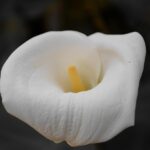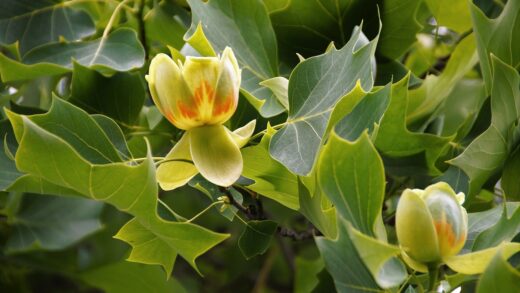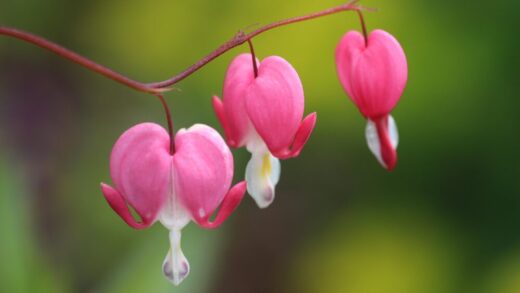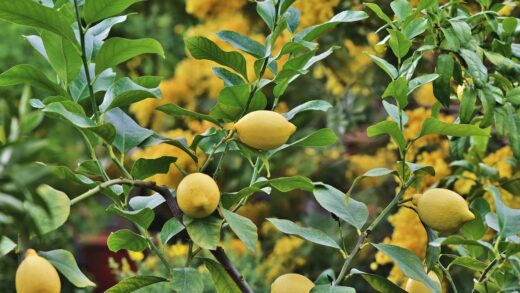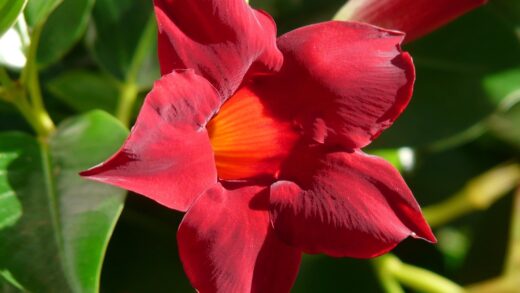Understanding the specific water requirements of the Balkan squill is fundamental to its successful cultivation. This charming bulbous perennial has a distinct annual cycle of moisture needs, directly linked to its periods of active growth and dormancy. Providing the right amount of water at the right time is crucial for encouraging vigorous growth, profuse flowering, and long-term bulb health. Conversely, improper watering, particularly overwatering during its dormant phase, is one of the most common reasons for failure. Therefore, a thoughtful and responsive irrigation strategy, one that mimics the natural precipitation patterns of its native habitat, is essential for allowing this plant to truly thrive in a garden setting.
The most critical period for moisture is during the spring. From the moment the first green shoots push through the soil until the foliage begins to yellow after flowering, the Balkan squill requires a consistent and reliable supply of water. This is the time of its most energetic growth, when it is developing its leaves, producing its stunning star-shaped flowers, and beginning the process of replenishing the energy stores within its bulb. In its native Balkan meadows, this period coincides with spring rains and melting snow, which keep the soil evenly moist. Replicating these conditions in the garden is key to a spectacular floral display.
Following the flowering period, as the plant’s foliage starts to die back, its water requirements begin to decrease significantly. The leaves, having completed their work of photosynthesizing and sending energy back to the bulb, will naturally wither. This is a signal that the plant is preparing to enter its summer dormancy. Gradually reducing the amount of supplemental water you provide during this transition helps to facilitate this natural process. It allows the soil to begin drying out, which is a necessary condition for the bulb to cure and rest properly.
The summer dormancy period is when the plant is most vulnerable to excessive moisture. Once the foliage has completely disappeared, the bulb is at rest underground. In this state, it has very minimal water needs, and wet, soggy soil can quickly lead to fungal diseases and bulb rot. In most climates with at least occasional summer rainfall, no supplemental irrigation is necessary or desirable for established plants. The primary goal during summer is to ensure the soil remains on the dry side, allowing the bulbs to bake in the warm earth, a condition that promotes their health and encourages strong flowering the following year.
Watering during the growth phase
The spring growth phase, which encompasses the emergence of foliage and the flowering period, is when the Balkan squill has its highest demand for water. During this time of rapid development, the soil should be kept consistently and evenly moist, but never waterlogged. Think of the conditions of a damp woodland floor or a spring meadow; the soil is cool and retains moisture without being saturated. A lack of adequate water during this critical window can lead to stunted growth, a diminished number of flowers, and a shorter blooming period, as the plant becomes stressed and conserves its resources.
More articles on this topic
For bulbs planted in garden beds and borders, natural spring rainfall is often sufficient to meet their needs. However, during unseasonably dry spells in the spring, supplemental watering will be necessary to prevent the soil from drying out completely. When you do water, it is important to do so deeply and thoroughly, allowing the moisture to penetrate down to the root zone of the bulbs, which is typically 5-10 centimeters below the surface. A light sprinkling on the soil surface is ineffective as it evaporates quickly and does not reach the roots where it is needed.
The best time to water is in the morning. This allows the foliage to dry off during the day, which can help to reduce the risk of fungal diseases developing. Watering deeply but infrequently is a much better strategy than watering lightly every day. Check the soil moisture by inserting your finger a few centimeters into the soil. If it feels dry at that depth, it is a good indication that it is time to water. This hands-on approach is more reliable than sticking to a rigid watering schedule, as it allows you to respond to the actual weather conditions and the specific needs of your garden.
For Balkan squill that are being grown in containers, the need for vigilant watering is even greater. The soil in pots and containers dries out much more quickly than garden soil, especially on windy or sunny days. It is essential to check the moisture level in containers daily during the spring growth period. Water thoroughly whenever the top 2-3 centimeters of the compost feels dry to the touch, and ensure that the pots have excellent drainage so that any excess water can escape freely. Consistent moisture is the key to achieving a stunning display from container-grown specimens.
The post-flowering transition
The period immediately after the Balkan squill has finished flowering marks a crucial transition in its watering needs. While the vibrant blue flowers have faded, the plant’s work for the season is not yet complete. The strap-like foliage now takes center stage, continuing to photosynthesize and channel energy down into the bulb for storage. During this phase, which can last for several weeks, it is important not to abruptly cease watering. The roots are still active and require moisture to support the leaves in their vital task of replenishing the bulb’s reserves for the next year’s growth.
More articles on this topic
You should continue to ensure the soil remains lightly moist, especially if the weather is dry. However, this is the time to begin gradually reducing the frequency and volume of your watering. This slow tapering of moisture signals to the plant that the growing season is coming to an end and encourages it to initiate the process of dormancy. A sudden cut-off of water can stress the plant, while continuing to water heavily can delay dormancy and increase the risk of the bulb rotting as it becomes less active. The goal is to manage a gentle and natural decline.
As the leaves begin to turn yellow and wither, this is a clear visual cue that the bulb’s energy stores are being topped up and the plant is preparing for its summer rest. As the yellowing progresses, you should further reduce your watering. By the time the foliage has completely died back and can be easily pulled away, supplemental irrigation should cease altogether. This carefully managed transition from a moist spring environment to a dry summer one is critical for the long-term health and perennial nature of the Balkan squill.
Failing to manage this transition correctly can have negative consequences. If the soil is kept too wet for too long after flowering, it can interfere with the bulb’s ability to enter full dormancy. This can leave it vulnerable to fungal diseases and may result in weaker growth the following spring. Respecting this natural cycle and adjusting your watering practices accordingly is a hallmark of successful bulb cultivation, ensuring that the plant completes its annual life cycle in a healthy and sustainable way.
Summer dormancy and water
Once the foliage has completely died back, the Balkan squill enters its summer dormancy, a period of rest that is essential for its survival. During this time, the bulb’s metabolic activity slows down dramatically, and its need for water is virtually non-existent. The primary rule for this phase is to keep the bulbs dry. In their native habitat, the summers are typically warm and dry, and the bulbs are left to bake in the soil. Replicating these conditions is paramount, as excessive moisture during dormancy is the most common cause of bulb failure.
For established clumps of Balkan squill planted in a well-drained garden border, this usually means no supplemental watering is required at all from early summer until the autumn rains begin. Natural summer rainfall in most temperate climates will not be problematic, provided the soil drainage is excellent. The real danger comes from targeted irrigation intended for other, more thirsty summer-blooming plants nearby. If the squill are planted in a mixed border that is watered regularly throughout the summer, the bulbs are at high risk of rotting.
If your Balkan squill are situated in an area that must be irrigated during the summer, it is wise to be strategic about how you water. Use a soaker hose or drip irrigation to deliver water directly to the base of the summer-blooming plants, avoiding the area where the squill bulbs are dormant. Avoid using overhead sprinklers that water indiscriminately. In some cases, it may even be beneficial to plant Balkan squill in a dedicated area with other bulbs that have similar summer-dry requirements, such as many species of tulips and alliums, to simplify watering routines.
For bulbs grown in containers, the situation requires even more careful management. Once the foliage has died back, the pots should be moved to a location where they are sheltered from summer rains, such as against a sunny wall under the eaves of the house or into a dry greenhouse. The compost should be allowed to dry out completely and remain that way throughout the summer. Watering should only resume in the autumn when temperatures begin to cool, signaling the start of a new growth cycle. Adhering to this dry dormant period is non-negotiable for the health and longevity of the bulbs.
Autumn and winter moisture levels
As summer transitions into autumn, the watering strategy for the Balkan squill needs to be reassessed. The onset of cooler temperatures and the beginning of autumn rains naturally signal the end of the bulb’s dormancy period. It is during this time that the bulbs will slowly begin to reawaken underground, starting the process of developing new roots in preparation for the spring. For garden-planted bulbs, natural rainfall is typically all that is required to rehydrate the soil and trigger this new root growth. It is generally not necessary to provide any supplemental irrigation in the autumn unless you are experiencing a prolonged and severe drought.
The primary concern during the autumn and winter months is not a lack of water, but an excess of it. The combination of cold temperatures and saturated soil can be lethal for the bulbs, leading to rot. This is why excellent drainage, established during the initial soil preparation, is so critically important. In areas with heavy winter rainfall, the ability of the soil to shed excess water quickly is the key to the bulbs’ survival. If your soil is heavy and prone to waterlogging, the bulbs may perish over the winter.
For Balkan squill grown in containers, the management of autumn and winter moisture is more hands-on. While the pots should be exposed to some moisture to rehydrate the compost and encourage root formation, they should not be allowed to become saturated. It is often best to move the containers to a location where they receive some natural rainfall but are sheltered from the absolute heaviest downpours, such as a cold frame or an unheated greenhouse. The goal is to keep the compost slightly damp, but not wet, throughout the winter.
In regions with very cold winters where the ground freezes solid, a layer of mulch applied in the autumn can help to regulate soil moisture and temperature. A 3-5 centimeter layer of bark chippings, leaf mold, or straw will insulate the ground, preventing the repeated freezing and thawing cycles that can damage the bulb’s developing roots and heave the bulbs out of the soil. This mulch will also help to conserve a moderate level of moisture in the soil, preventing it from drying out completely in cold, windy weather. Proper management of winter moisture is the final, crucial step in ensuring the bulbs survive the cold months in good health, ready to burst into life in the spring.











